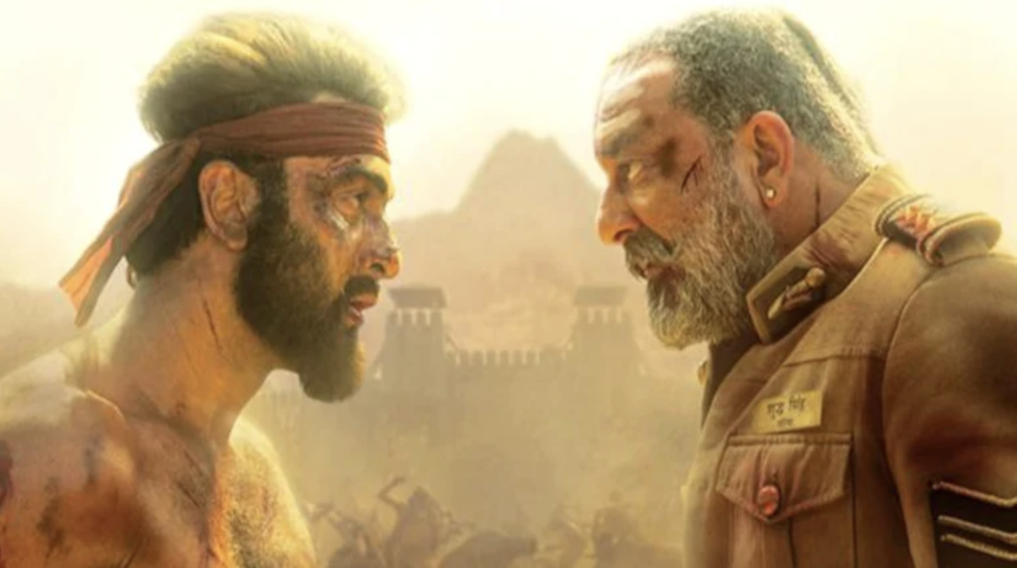Shamshera is a nod to the massive box office success the industry has seen with regional films from the South, specifically Tamil and Telugu cinema. Inspired by material from the KGF and Bahubali franchises, the film is the outcome of India’s premier Bollywood studio attempt of taking the blueprint of these films to create box office magic.
Set in the fictional town of Kaza in a vaguely located period of the British Empire era, the makers spare no budget in creating the world the film is set in. The emphasis on strong visuals, sweeping dialogue, and simplistic narratives. All of this is amped up multifold by a booming background and music score courtesy Mithoon. And if there’s any room remaining for theatrics and impact, its amply filled in by the bulky frame of Sanjay Dutt, a glib, conniving upper caste Brahman villain, cackling puritanical nonsense in all his bigoted glory.
One feels that if going full throttle was the intent, then YRF and Karan Malhotra should have gone all the way. Shamshera is missing more whistle-worthy moments. It needed bigger action sets, grander pivots, and larger than life heroics from its hero. The train sequence in the end is emblematic of the point. This should have been one of the highlights of the film, the battle-with -Thanos-moment of the film. You have to give that high to the audience, because that’s the level the film is operating at. The sequence is a damp squib, over before it started. Sholay, made 40 years ago, with an iota of Shamshera‘s budget, had a more gripping train fight. It clearly shows that the intent has to be there, and it was missing in Shamshera.
The same issue continues with the emotional graphs in the film. I think the film needed moments of suspended belief (!) for the content to be in sync with the treatment – the larger than life moments were missing. A la Prabhas, stopping the rampaging elephant from injuring his mother. A father and son revenge story, a mother tormented, a community oppressed – that’s a lot of material for the writers to leverage. But there are no huge surges of emotional highs in the film. The audience that has loved the potboilers is going to want this to complete their experience, and this is missing in Shamshera.
It is not that the makers have not tried. The introduction of the principled British offer, in stark contrast to the evil Brahmin goon is nicely done. They both are, in theory, a nemesis of Ranbir Kapoor’s Balbir, but the brief jugalbandi between the officer and the dacoit adds an element of interest to the plot. Similarly, the parts of the film where Ranbir and his gang go on the rampage is great fun, because you finally get to see the bad guys lose. More of those moments were needed to hit the highs in the film.
There are few complaints with the leading man. Ranbir Kapoor’s double role act is a sliver of pleasing wistfulness amidst the babel of over operatic melodrama that is Shamshera. This is not a film where he is a walk-in for the lead role. He is a Rajesh Khanna chocolate boy walking into the grimy frames of a Sunny Deol action set. When he is in a fight sequence, the film becomes more real, more relatable. There’s no denying the quality he brings to the screen.
Shamshera is an interesting but unsuccessful experiment by YRF. It is entirely possible that they will keep the hits, learn from the misses, and ultimately get the formula right. But I hope they go beyond that. YRF holds a position in Hindi cinema because it became a trailblazer, setting trends that other filmmakers aspired for. There are few with the acumen and understanding of Indian movie goers that Aditya Chopra has. Even a Shamshera should be breaking the mould, not fitting in one. We will wait for the time to come.
Hindi, Action, Drama, Color.


